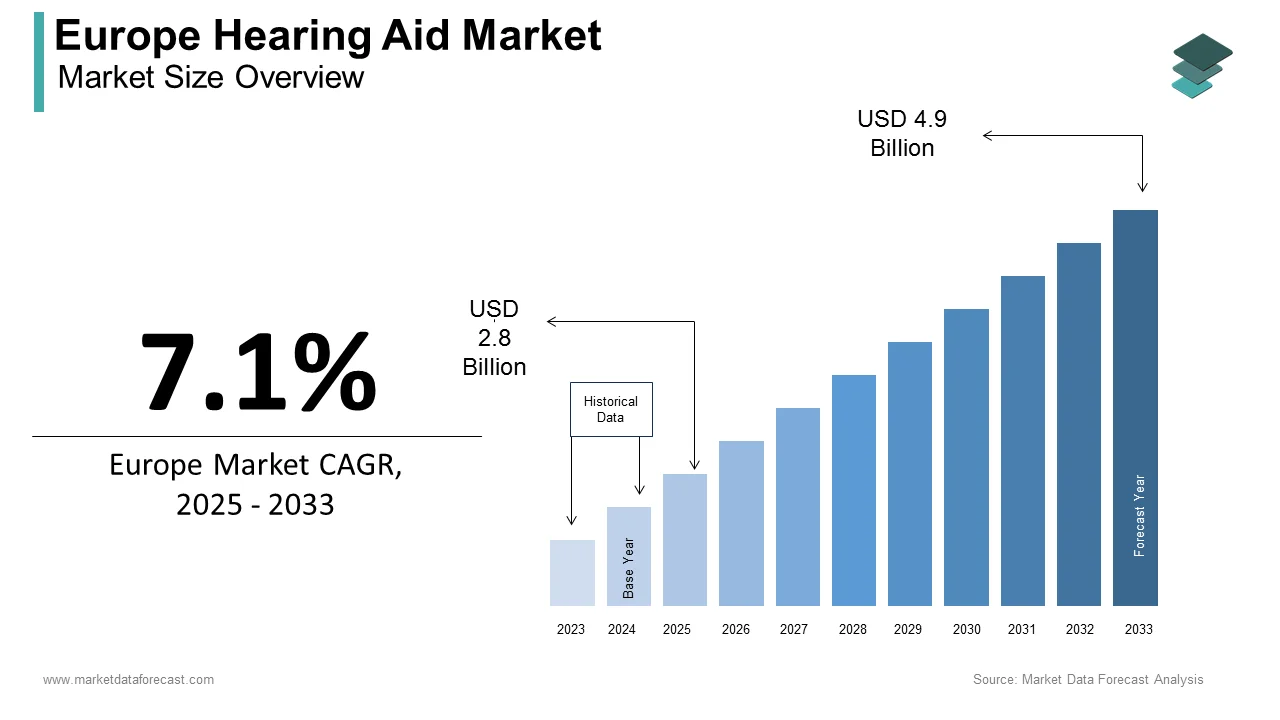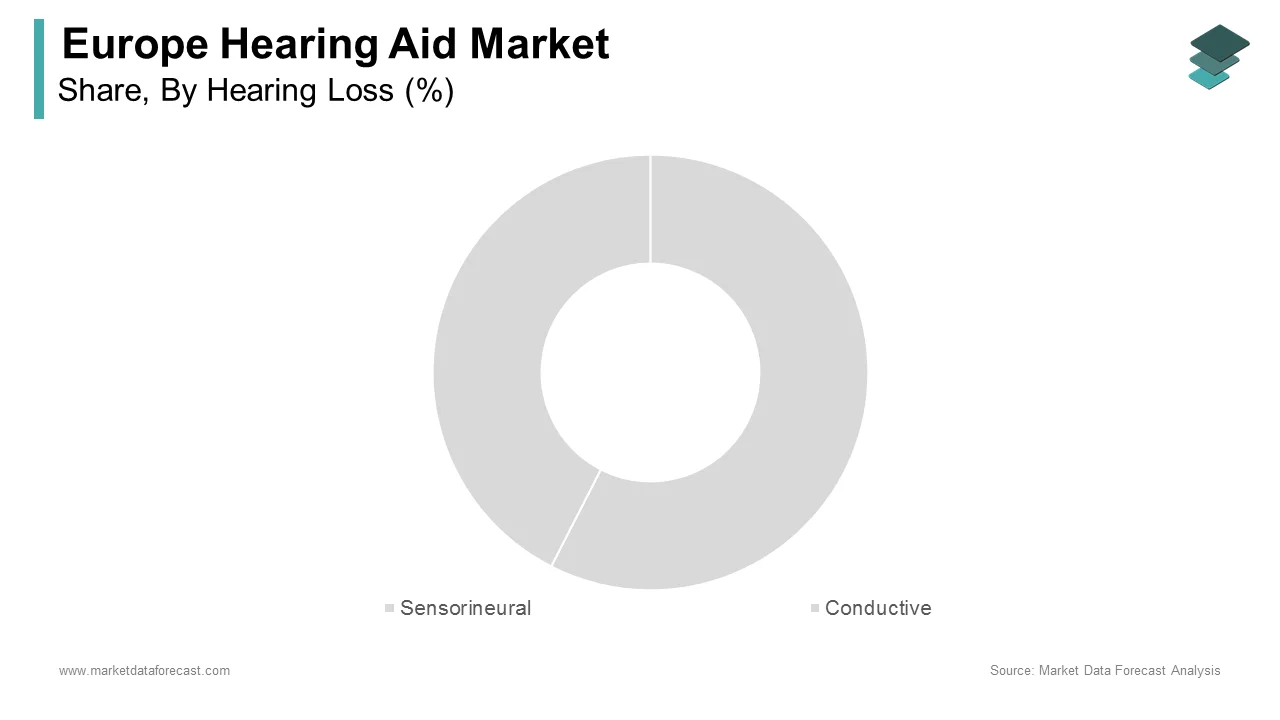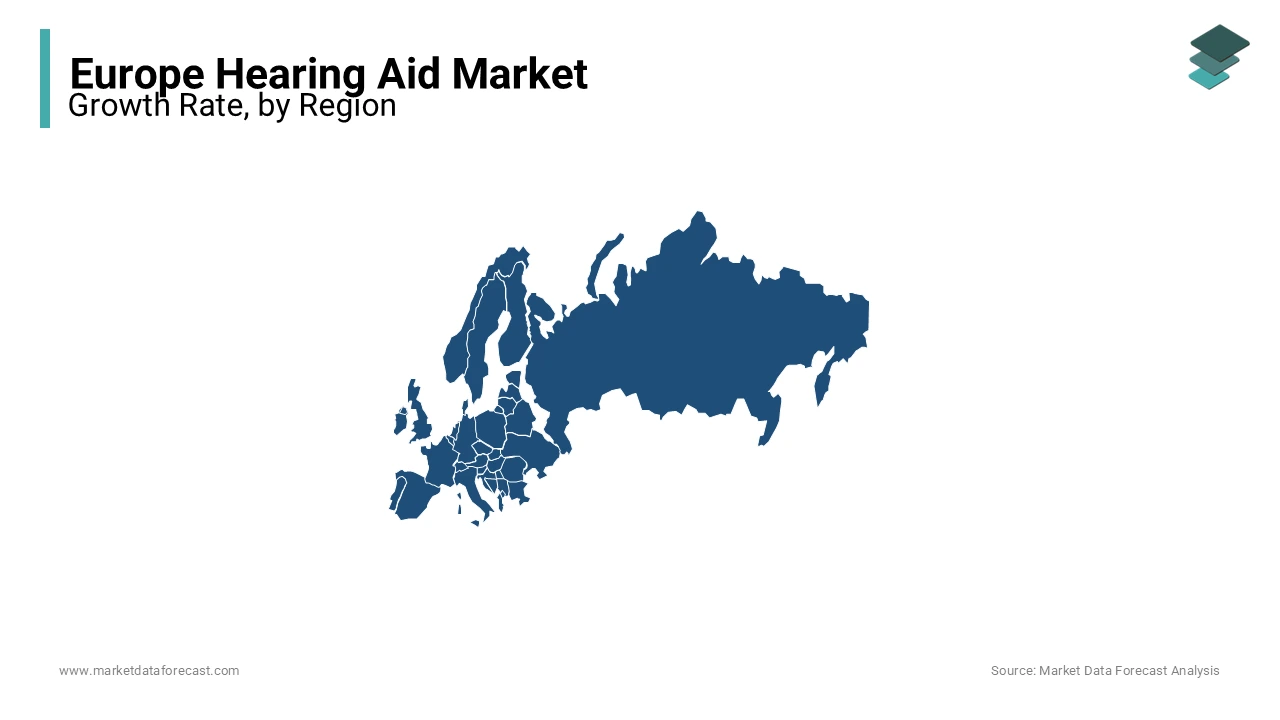Europe Hearing Aid Market Size, Share, Trends & Growth Forecast Report By Hearing Loss, Product, End-User & Country (United Kingdom, France, Spain, Germany, Italy, Russia, Sweden, Denmark, Switzerland, Netherlands, Turkey, Czech Republic and Rest of Europe), Industry Analysis (2025 to 2033)
Europe Hearing Aid Market Size
The hearing aid market size in Europe was valued at USD 2.61 billion in 2024. The European market is predicted to grow at a CAGR of 7.1% from 2025 to 2033 and be valued at USD 2.8 billion in 2025 and USD 4.9 billion by 2033.

MARKET DRIVERS
The growing aging population suffering from hearing issues across Europe is one of the key factors propelling the growth of the European hearing aid market. Hearing capacity declines with age. Around 40% of people in the UK aged above 55 have a hearing impairment. The adoption of hearing aids is high among older people compared to the younger generation. The aging population is increasing significantly across the European region, which is expected to reflect the growing adoption of hearing aids. The rising adoption of technological advancements to develop well-advanced hearing aid devices further promotes European market growth. Now, hearing aid devices are manufactured with integrating technological improvements such as wireless, digital, and sound processing. In addition, favorable reimbursement policies, growing R&D activities, availability of products in offline stores, and increasing manufacturing of personalized hearing devices further propel the market’s growth rate in the European region. Furthermore, growing investments to conduct R&D and develop innovative products, growing support from the government and non-government organizations, emerging economies' presence, and awareness around smart hearing aid devices are anticipated to showcase a favorable impact on the European hearing aid market growth. In addition, rising disposable income, increasing awareness through campaigns and digital advertisements, the emergence of new technologies, changes in government schemes, and the launch of different policies are supporting the market growth in this region.
MARKET RESTRAINTS
However, the high costs associated with hearing aid devices and the lack of skilled professionals to perform ear-related tests hamper the market growth. Increasing shyness among certain groups who want to wear hearing aid devices and fluctuations in the availability of various materials limit the market’s growth rate in this region. Less training institutes and decreasing productivity of the products, difficulty in manufacturing innovative designs, and failure of the systems in the real-time application are further inhibiting the hearing aid market growth in the European region.
SEGMENT ANALYSIS
By Hearing Loss

REGIONAL ANALYSIS
Geographically, the European region had 31.2% of the global market share in 2023. The European region is anticipated to grow at a healthy CAGR during the forecast period. The EU governments are putting significant efforts into creating awareness among people regarding hearing loss issues and promoting the usage of hearing aids. In addition, the increasing funding, encouragement of R&D activities, and favorable reimbursement policies are further aiding market growth in Europe.

The UK led the European market in 2024. The hearing aid market in the UK is primarily driven by the growing geriatric population base, increasing prevalence of hearing loss, and patients' high purchasing power. Also, increasing awareness about these healthcare devices contributes to the region's large share. In addition, the growing adoption of smart hearing devices and favorable government policies favoring middle-class people are propelling the hearing aid market in the UK. However, failure of the hearing systems in real-time applications and variations in the cost of the hearing devices, which may rise and fall, are hampering the market of this region. UK has distributed 1,668,877 hearing instruments across the NHS and private sector. Increasing sales for hearing aid devices through online channels and a growing number of hearing aid clinics in the UK are further supporting the market.
The German hearing aid market is expected to have the fastest growth rate over the forecast period. The growth is attributed to factors like the low cost of these devices. Germany stands next to the UK in disbursing hearing aids with 1,251,000 units in the same year, and France is projected to distribute 709,000 units, followed by Germany. Increasing product approvals also favors market growth in Germany. German products are the most advanced products used in hearing aid technology; German researchers are focused on manufacturing tiny devices that cannot be seen outside the ear as more people would feel comfortable using such devices.
KEY MARKET PLAYERS
Companies that are playing a prominent role in the European Hearing Aid Market profiled in this report are GN Store Nord A/S (Denmark), Cochlear Limited (Australia), MED-EL (Austria), SeboTek Hearing Systems, Starkey Hearing Technologies, Inc. (U.S.), Widex (Denmark), William Demant Holding A/S (Denmark), LLC (U.S.), Sivantos Pte. Ltd. (Singapore), Sonova (Switzerland), and Zounds Hearing, Inc. (U.S.).
MARKET SEGMENTATION
This report has segmented and sub-segmented the European hearing aid market into the following categories.
By Hearing Loss
- Sensorineural
- Conductive
By Product
- In-The-Ear
- Canal Hearing Aids
- Receiver-In-The-Ear
- Behind-The-Ear
- Cochlear Implants
- Bone Anchored Systems
By End-User
- Adults
- Pediatrics
By Country
- United Kingdom
- France
- Spain
- Germany
- Italy
- Russia
- Sweden
- Denmark
- Switzerland
- Netherlands
- Turkey
- Czech Republic
- Rest of Europe
Frequently Asked Questions
Which countries in Europe contribute the most to the hearing aid market share?
Countries such as Germany, the United Kingdom, and France are major contributors to the hearing aid market share in Europe.
Are there any challenges hindering the growth of the Europe hearing aid market?
The high cost of hearing aids, limited access to healthcare services in some regions, and the stigma associated with hearing loss are some of the major challenges to the growth of the Europe hearing aid market.
How is the Europe hearing aid market expected to grow in the next five years?
The Europe hearing aid market is predicted to grow at a CAGR of 7.1% from 2025 to 2033.
Related Reports
Access the study in MULTIPLE FORMATS
Purchase options starting from $ 2000
Didn’t find what you’re looking for?
TALK TO OUR ANALYST TEAM
Need something within your budget?
NO WORRIES! WE GOT YOU COVERED!
Call us on: +1 888 702 9696 (U.S Toll Free)
Write to us: sales@marketdataforecast.com
